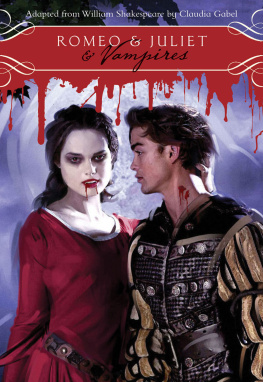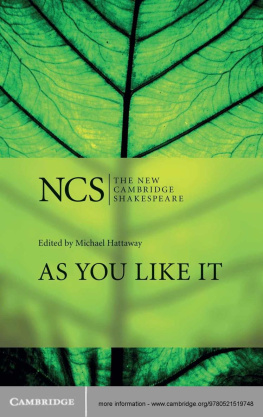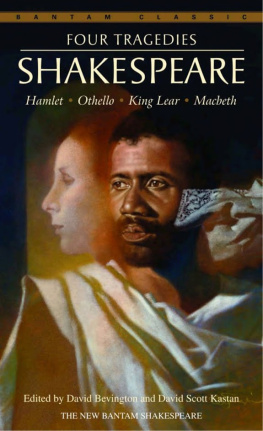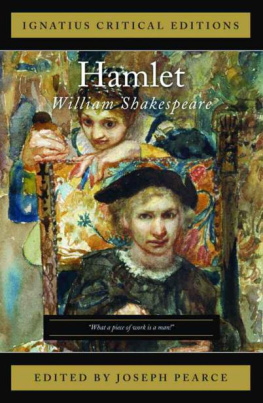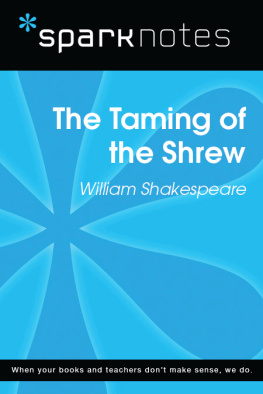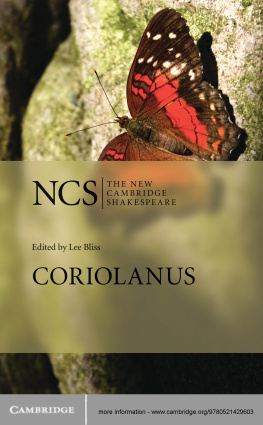William Shakespeare - The Taming of the Shrew
Here you can read online William Shakespeare - The Taming of the Shrew full text of the book (entire story) in english for free. Download pdf and epub, get meaning, cover and reviews about this ebook. year: 2010, publisher: Random House Publishing Group, genre: Science. Description of the work, (preface) as well as reviews are available. Best literature library LitArk.com created for fans of good reading and offers a wide selection of genres:
Romance novel
Science fiction
Adventure
Detective
Science
History
Home and family
Prose
Art
Politics
Computer
Non-fiction
Religion
Business
Children
Humor
Choose a favorite category and find really read worthwhile books. Enjoy immersion in the world of imagination, feel the emotions of the characters or learn something new for yourself, make an fascinating discovery.

- Book:The Taming of the Shrew
- Author:
- Publisher:Random House Publishing Group
- Genre:
- Year:2010
- Rating:5 / 5
- Favourites:Add to favourites
- Your mark:
- 100
- 1
- 2
- 3
- 4
- 5
The Taming of the Shrew: summary, description and annotation
We offer to read an annotation, description, summary or preface (depends on what the author of the book "The Taming of the Shrew" wrote himself). If you haven't found the necessary information about the book — write in the comments, we will try to find it.
The Taming of the Shrew — read online for free the complete book (whole text) full work
Below is the text of the book, divided by pages. System saving the place of the last page read, allows you to conveniently read the book "The Taming of the Shrew" online for free, without having to search again every time where you left off. Put a bookmark, and you can go to the page where you finished reading at any time.
Font size:
Interval:
Bookmark:
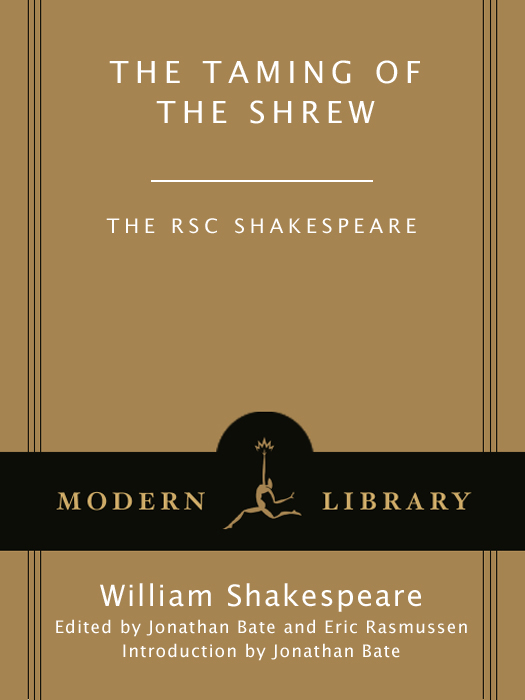
The RSC Shakespeare
Edited by Jonathan Bate and Eric Rasmussen
Chief Associate Editors: Hlose Snchal and Jan Sewell
Associate Editors: Trey Jansen, Eleanor Lowe, Lucy Munro, Dee Anna Phares
The Taming of the Shrew
Textual editing: Eric Rasmussen
Introduction and Shakespeares Career in the Theater: Jonathan Bate
Commentary: Charlotte Scott and Hlose Snchal
Scene-by-Scene Analysis: Esme Miskimmin
In Performance: Karin Brown (RSC stagings) and Jan Sewell (overview)
The Directors Cut (interviews by Jonathan Bate and Kevin Wright): Gregory Doran and Phyllida Lloyd Playing Kate: Michelle Gomez
Editorial Advisory Board
Gregory Doran, Chief Associate Director, Royal Shakespeare Company
Jim Davis, Professor of Theatre Studies, University of Warwick, UK
Charles Edelman, Senior Lecturer, Edith Cowan University, Western Australia
Lukas Erne, Professor of Modern English Literature, Universit de Genve, Switzerland
Jacqui OHanlon, Director of Education, Royal Shakespeare Company
Akiko Kusunoki, Tokyo Womans Christian University, Japan
Ron Rosenbaum, author and journalist, New York, USA
James Shapiro, Professor of English and Comparative Literature, Columbia University, USA
Tiffany Stern, Professor and Tutor in English, University of Oxford, UK
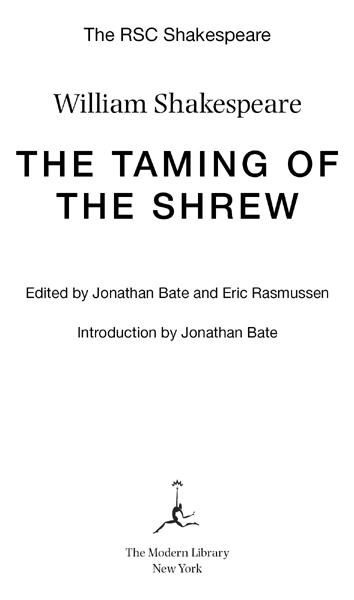
2010 Modern Library Paperback Edition
Introduction copyright 2007, 2009 by The Royal Shakespeare Company
All rights reserved.
Published in the United States by Modern Library, an imprint of The Random House Publishing Group, a division of Random House, Inc., New York.
M ODERN L IBRARY and the T ORCHBEARER Design are registered trademarks of Random House, Inc.
Royal Shakespeare Company, RSC, and the RSC logo are trademarks or registered trademarks of The Royal Shakespeare Company.
The version of The Taming of the Shrew and the corresponding footnotes that appear in this volume were originally published in William Shakespeare: Complete Works, edited by Jonathan Bate and Eric Rasmussen, published in 2007 by Modern Library, an imprint of The Random House Publishing Group, a division of Random House, Inc.
eISBN: 978-1-58836-876-8
www.modernlibrary.com
v3.1
The Taming of the Shrew: is Kate (or should we call her Katherina?) really a shrew and is she really tamed?
The novelist Vladimir Nabokov once wrote that reality is a word that only has meaning when it is placed between quotation marks. The physicists reality is not the same as the biochemists, the secular humanists as the religious fundamentalists. Dare one say that womans is not the same as mans? In a culture where the conception of inherent sexual difference is regarded as a mere prejudice, as a forbidden thought (regardless of the reality revealed by molecular biology and neuroanatomy), The Taming of the Shrew is not likely to be one of Shakespeares most admired plays. Its presentation of female subordination presents the same kind of awkwardness for liberal sensibilities that the representation of Shylock does in the post-Holocaust world. At face value, the play proposes that desirable women are quiet and submissive, whereas women with spirit must be tamed through a combination of physical and mental abuse. Necessary tools may include starvation, sense deprivation, and the kind of distortion of reality that is practiced in totalitarian regimes.
Thus OBrien to Winston Smith in George Orwells 1984: How many fingers am I holding up? In this reality the correct answer is not the actual number but the number that the torturer says he is holding up. There is a precise analogy on the road back to Padua, after Kate has undergone her taming in the secluded country house where no neighbor will hear her cries:
PETRUCHIO I say it is the moon.
KATE I know it is the moon.
PETRUCHIO Nay, then you lie. It is the blessd sun.
KATE Then, God be blessed, it is the blessd sun.
But sun it is not, when you say it is not,
And the moon changes even as your mind.
What you will have it named, even that it is,
And so it shall be so for Katherine.
HORTENSIO Petruchio, go thy ways, the field is won.
She has been bent to her husbands will. She is now ready to demonstrate that she is prepared to love, serve, and obey him. She knows her place: Such duty as the subject owes the prince / Even such a woman oweth to her husband. She offers to place her hand beneath her husbands foot. The shrew is tamed.
The younger dramatist John Fletcher, who was Shakespeares collaborator in his final years, clearly thought that this harsh ending needed a riposte. He wrote a sequel, The Womans Prize; or, The Tamer Tamed, in which Kate has died and Petruchio remarried, only to find his new wife giving him a taste of his own medicine by means of the time-honored device of refusing to sleep with him until he submits to her will. Kates sister Bianca plays the role of colonel in a war between the sexes which the women win, thus proving that it was an act of folly for Petruchio to tyrannize over his first wife in Shakespeares play.
In Shakespeares time, it was absolutely orthodox to believe that a man was head of the household, as the monarch was head of state and God was head of the cosmos. My foot my tutor? says Prospero in The Tempest when his daughter, Miranda, presumes to speak out of turn: if the man was the head, the girl-child was the foot, just as in Coriolanus a plebeian is nothing more than the big toe of the commonwealth. Kates readying of her hand to be trodden upon turns the analogy between social and bodily hierarchy into a stage image. But she is going much further than she should: the wife was not supposed to be beneath the foot, she was supposed to be the heart of the household. Instead of crowing in his triumph, Petruchio says kiss me, Kate for the third time, giving Cole Porter a title for his reimagining of the story in the cheerful mode of a musical.
Nabokov placed the word reality in quotation marks not because he was a cultural relativist, but because he was an aesthete. That is to say, he did not believe that art was merely a reflection, a mirror, of a preexistent reality. Art shapes the way in which we perceive ourselves and the world. Falling in love is not only the work of molecular change in the brain, but also a set of behaviors learned from the romantic fictions of page, stagenow screenand cultural memory. One of the tricks of great art is to draw attention to its own artificiality and in so doing paradoxically assert that its reality is as real as anything in the quotidian world of its audience. Shakespeares taste for plays-within-the-play and allusions to the theatricality of the world, Mozarts witty quotations of the clichs of operatic convention, and Nabokovs magical wordplay all fulfill this function.
Sometimes, though, the opposite device is used: an artist puts quotation marks around a work in order to say Dont take this too seriously, dont mistake its feigning for reality. The Taming of the Shrew is such a work: the opening scenes with Christopher Sly place the entire play within quotation marks. The induction presents a series of wish-fulfillment fantasies to a drunken tinker: the fantasy that he is a lord, that he has a beautiful young wife, that scenes of erotic delight can be presented for his delectation, and that a company of professional players will stage a kind of history for his sole benefit, in order to frame his mind to mirth and merriment while teaching him how to tame a shrewish wife. But Sly is not a lord and the wife who watches with him is not a woman but a crossed-dressed boywhich reminds us that in Shakespeares working world the Kate who is humiliated by Petruchio was also not a woman but a cross-dressed boy-actor. The effect of the frame is to distance the action and so to suggest that it does not present the reality of proper marital relations. If Sly is not a lord and the pageboy not a wife, then this is not how to tame a shrew.
Font size:
Interval:
Bookmark:
Similar books «The Taming of the Shrew»
Look at similar books to The Taming of the Shrew. We have selected literature similar in name and meaning in the hope of providing readers with more options to find new, interesting, not yet read works.
Discussion, reviews of the book The Taming of the Shrew and just readers' own opinions. Leave your comments, write what you think about the work, its meaning or the main characters. Specify what exactly you liked and what you didn't like, and why you think so.


